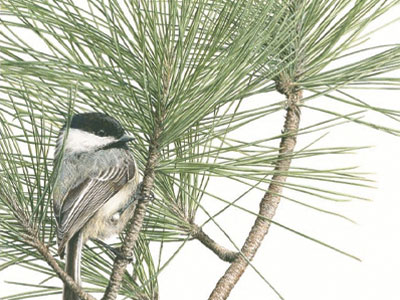[Virtual] Painting the Beauty of Birds in Watercolor & Gouache , July 17, 2024 6:00PM
Event Summary

Additional Details
Item details
Date
Name
[Virtual] Painting the Beauty of Birds in Watercolor & Gouache
Description
Instructor: Kelly Radding
 Wednesdays, July 17, 24 and 31 | 6 - 9 p.m. [please note new dates]
Wednesdays, July 17, 24 and 31 | 6 - 9 p.m. [please note new dates]
$230 members | $250 nonmembers
Presented as a live webinar through Zoom
Objective: To be able to paint birds both in watercolor and gouache and learn the difference between two water-based mediums
Level: Beginner to advanced
Prerequisites: Botanical Drawing I and II and Watercolor I (or relevant experience, contact Stephanie Lind slind@phipps.conservatory.org)
Birds have been a favorite subject of many artists for a reason. They are elegant, colorful and part of our everyday lives. Watercolor and gouache used separately (or in combination!) are both perfect mediums for capturing the beauty of birds. Watercolor techniques have many applications for painting birds. Loose washes add color notes to informal sketches, can be stand-alone finished studies and can form the first layers of a more detailed painting. Wet-into-wet washes create spontaneous, creative colors and patterns to add interest, and wet transparent washes over dried layers build depth, color and form. Dry brush strokes achieve fine details with only a few brush strokes or an entire painting. Gouache is an opaque water-based medium that allows painting light values over dark, as well as a more traditional watercolor-like approach of working from lighter values to darker ones. Gouache is well-suited for lively, direct painting that can quickly record subjects and color in the field; yet is also a perfect medium for capturing detail in the studio. It’s unique opaque qualities are more closely aligned with painting in oils and acrylics. In this workshop, we’ll explore both approaches to painting birds, as well as a third option, using white gouache with your transparent watercolors. Using limited palettes for each medium will focus you to learn the unique qualities and techniques of each medium so that you can create bird paintings that really sing! Botanical Art and Illustration certificate program elective.
Art credit: Kelly Radding
We're sorry. Tickets are not available for this event at this time.
Seats
Phipps Adult Education Policies
- All times are Eastern Time Zone.
- Cancellation Policy:
- Contact edu@phipps.conservatory.org or 412-441-4442 ext. 3925 to cancel a class registration.
- Up to two weeks before the class (or the first class date, for a multi-session class), you may receive a full refund minus a non-refundable $10 administrative fee.
- Up to 72 hours (3 days) before the class or the first class date, you may receive a 50% refund.
- Less than 72 hours (3 days) before the class or the first class date, there are no refunds.
- Special events like conferences will have a separate cancellation policy and refund deadline.
- Phipps Adult Education classes are designed for individuals 18 years of age and older. Minors are permitted to attend online classes. Parents/guardians are welcome to sit in on class, but need to sign up separately to receive their own credit.
- Phipps reserves the right to substitute instructors when necessary.
- Receiving Class Credit: For both core and elective classes, students must attend all class sessions and complete and submit all the work required to earn class credit. Class credit is important if a student is pursuing the Basic or Advanced Botanical Art and Illustration certificate. Even if a student is not sure about pursuing the certificate, it is recommended that they earn credit for each class because this is difficult to do retroactively. If a student has to miss class (e.g. health reasons or a death in the family), they must contact the instructor at their earliest convenience to see if it’s possible to still earn class credit.
- A note on recordings: The class recordings posted on Google Classroom are meant to aid students in completing their work between classes but are not a substitute for attending class. Students are required to attend all classes and are not allowed to miss class and watch the recordings for credit.

